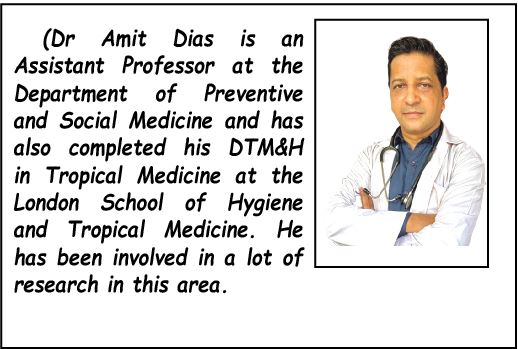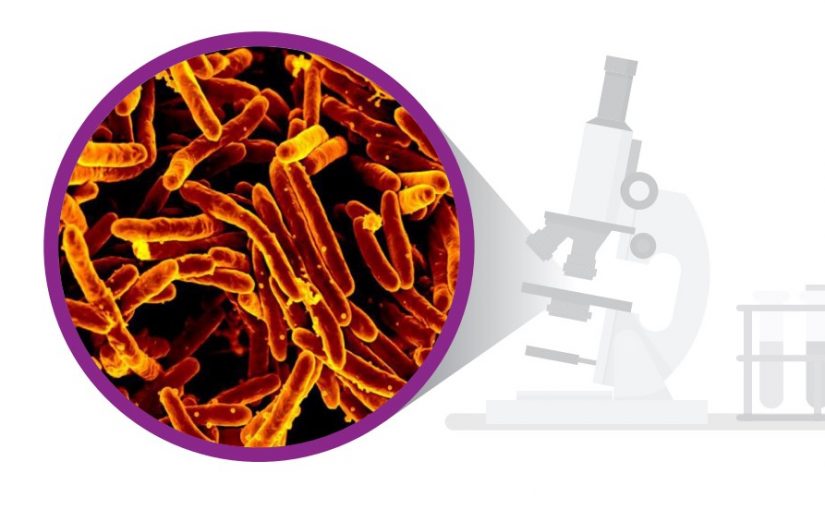Let’s work towards eliminating TB from India…
This week we spoke to DR AMIT DIAS from the Department of Preventive & Social Medicine at the GMC to get to know more about tuberculosis. He reaffirms that that disease is a major public health problem in the country. “The dream of elimination of tuberculosis by 2025, seems far-fetched, but if we collaborate and cooperate, we can certainly get closer to the goal.” Read more to understand the common presentation of tuberculosis and MDR and XDR TB. Awareness is the first step to getting care. We need to KNOW Tuberculosis for NO tuberculosis.
Goan Observer: Doctor let’s start with the very basics, tell us what causes tuberculosis?
Dr Amit Dias: Tuberculosis (TB) is an infectious disease caused by a bacteria called Mycobacterium tuberculosis (M tuberculosis). The bacteria, or germ, usually affects the lungs. However, TB germs can attack any part of the body, such as the lymph nodes, intestine, kidney, bones, spine, or brain. It can attack any part of the body where blood reaches, which means any part except the nails and the hair. There are broadly two types of TB: Pulmonary TB (where the lungs are affected) and Extra Pulmonary (which affects other parts of the body). However, amidst all this bad news, there is good news. People with TB can be treated if they seek medical help and comply with the treatment.
The key message I would like to give before getting lost in this talk is that once diagnosed with tuberculosis, please take the medications correctly for the right duration of time, even if you feel better. TB medicines are available free of cost to patients and the government has ensured that the best quality anti-TB drugs are made available to the people. The rise of multi-drug resistant and extremely resistant forms has made treating tuberculosis and achieving the elimination of TB very difficult.
In India, we are aiming to eliminate TB by 2025, which is five years before the global goal. This may seem impossible, but if we work together and the patients and doctors are in perfect partnership, then we can at least get closer to the goal.
Q: How does TB get transmitted?
A: TB is spread through the air from one person to another. The TB germs are spread into the air when a person with infectious TB disease of the lungs or throat coughs, speaks or sings. People nearby may breathe in these TB germs and become infected.
When a person breathes in TB germs, the TB germs can settle in the lungs and begin to grow. From there, the TB germs can move through the blood to other parts of the body such as the kidneys, spine or brain.
Q: Is there anyone who is at greater risk of getting TB?
A: Anyone can get TB. Some people have a higher risk of getting infected with TB: these are people who have contact with someone who has infectious TB disease. People who are immune-compromised have HIV infection, diabetes, are on steroids, have cancer, are malnourished, doing substance use (taking drugs), kidney disease, the elderly, etc. Healthcare workers who constantly come in contact with patients with TB are also at high risk. All age groups are at risk of developing the disease.
Q: Is there a condition called latent TB and what exactly is it?
A: Yes, there is a condition called latent TB. Most of us in a country like India would have been exposed to the TB germ. However, not everyone gets the disease. Our immunity can help us stay TB-free. However, the TB bacilli can remain inactive or dormant in the body and get activated when the person becomes immunocompromised for various reasons. People with latent TB do not have symptoms, nor do they feel sick and cannot spread TB to others.
Q: How can recognize the signs of TB Infection?
A: The most common form of TB infection is pulmonary TB. The person will present with a cough. We recommend screening for TB in every patient who has a cough for more than two weeks. In addition to this the new guidelines state that if a person is immunocompromised or has uncontrolled diabetes, we can screen for TB even in a person who has a cough for a week. The bottom line is that we need to detect TB early and initiate treatment so that patients get better soon and do not infect others.
The symptoms of TB disease will depend on which part of the body is affected. TB disease in the lungs may cause the following symptoms:
Cough (lasting longer than 2 weeks)
Coughing up sputum (phlegm from inside the lungs) or coughing out blood
Fever- usually low grade with an evening rise in temperature.
Night sweats
Chest pain
Chills
Loss of appetite
Weakness or fatigue
Weight loss
Symptoms of TB disease in other parts of the body include:
TB of the larynx – hoarseness
TB of the kidney – blood in the urine
TB meningitis/ brain – headache or confusion
TB of the spine – back pain, neurological problems
Q: Is there a vaccine for TB? How effective is it?
A: Yes, BCG, which is given at birth, is the vaccine for TB. However, it is only known to protect us from severe forms of TB.
Q: Is there treatment for TB?
A: Yes, very much, and the good news as I mentioned earlier is that the drugs are available free of cost under the National Tuberculosis Elimination Program. They are good quality drugs and care will be taken by the Primary Health Center to ensure that the patient is compliant with the medications. However, these medications have to be taken for a long period to ensure that all TB bacilli in the system are eliminated. Or else, they can change into resistant forms and attack once again. And this is then more difficult to treat.
Q: Why are so many drugs given for tuberculosis?
A: That is because each of them has a different mechanism of action. The combination of drugs shortens the duration of treatment, reduces the chances of disease relapse, and lowers the rate of drug resistance development compared to monotherapy.
Q: Since there are a lot of drugs to be given, there will be side effects? Can you enumerate some of them for us?
A: Every drug has side effects and here you are taking multiple drugs against a powerful bacteria. Yes, there will be side effects. But the benefits far outweigh the side effects and one SHOULD take the treatment. We now have advanced tests that tell us about the sensitivity pattern of the bacilli and can ensure that the person gets the right drugs right from the start. If you do get the side effects, consult the doctor for an alternative treatment regimen. The common side effects are:
Skin rash
Nausea
Vomiting
Lack of appetite
Stomach pain
Brown urine or light-colored stool
Tiredness
Fever for 3 or more days
Blurred or changed vision
Yellowish skin or eyes
Dizziness
Tingling or numbness around the mouth
Tingling sensation in the hands and feet
Stomach upset
Joint aches
The drug rifampin may cause orange discoloration of body fluids such as urine (pee), saliva, tears, sweat, and breast milk. Orange discoloration of body fluids is expected and harmless. The colors fade over time.
Q: What is your advice to our readers?
A: Remember that we are at war with a disease. We need to eliminate TB at all costs. It is a difficult task, but we can do it if we all fight it together. You need to be aware of the signs of TB and come forward. Remember the slogan “TB Harega, Desh Jeetega.” Stay strong and TB-free and reach out to people with TB… they need support and psychological help to make a full recovery.

